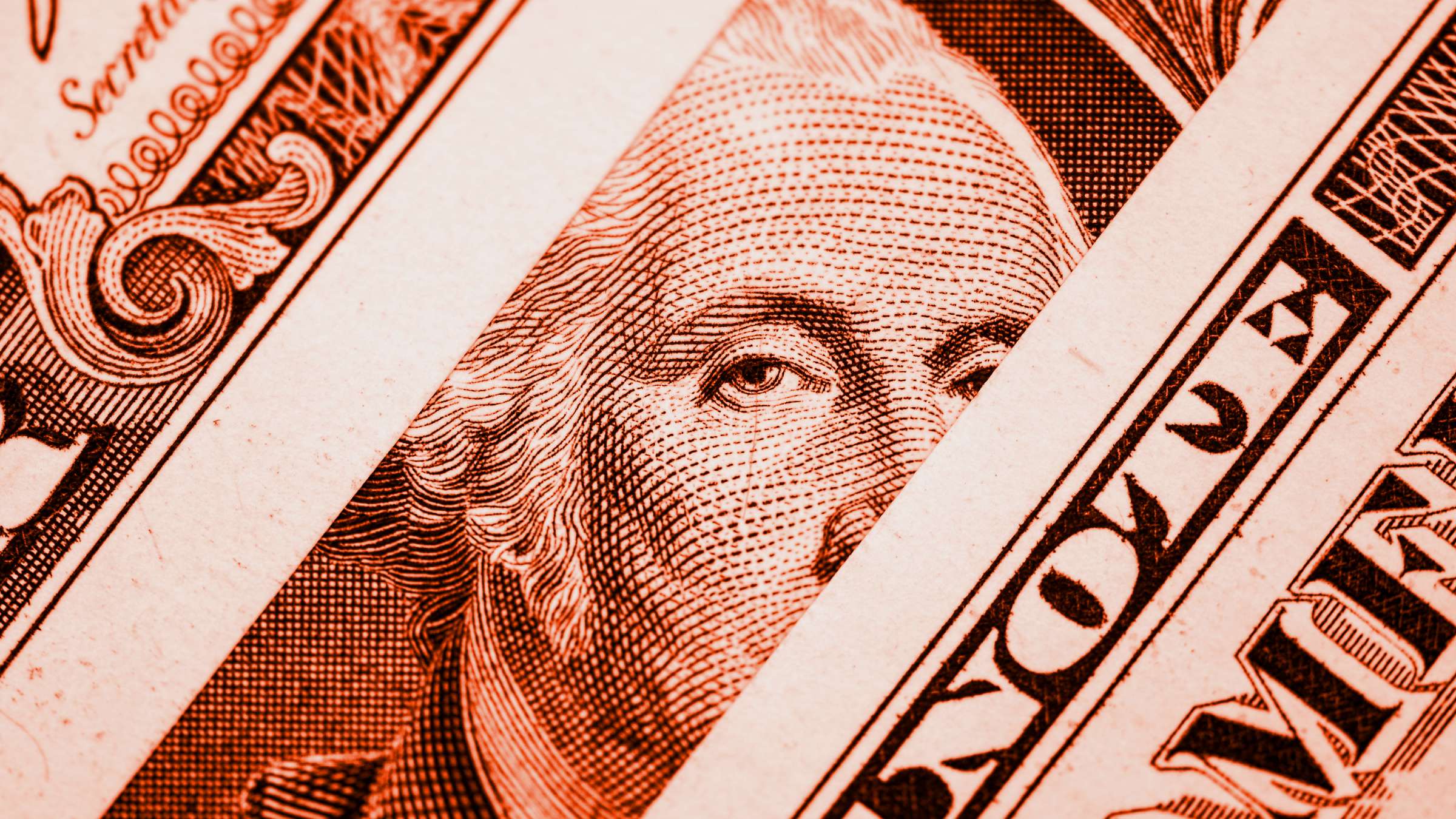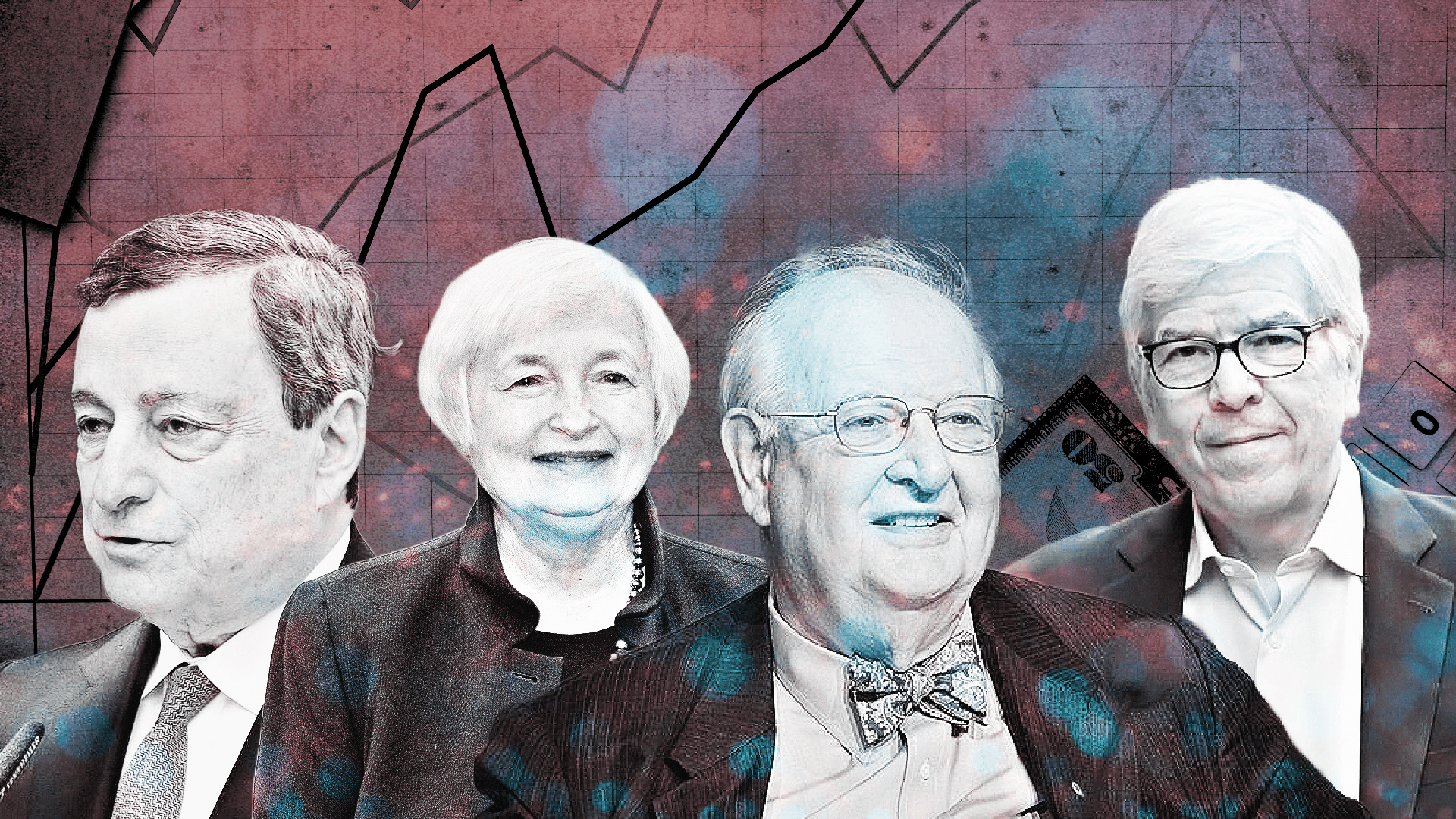
Regardless of who wins the presidential election in November, the 2016 campaign has already dramatically undermined a major pillar of post–World War II American economic and foreign policy—free trade.
[Clyde Prestowitz| June 17, 2016 |Washington Monthly]
Hillary Clinton’s current rejection of the same Trans-Pacific Partnership (TPP) free trade agreement that earlier she had called “the gold standard” of free trade deals is a far cry from her husband’s 1990s embrace of globalization as essentially the same thing as Americanization. Of course, her shift of position is a dramatic indication of how much she is feeling “the Bern,” since he rejects “all the crazy trade deals” of the past forty odd years.
Even more surprising is Donald Trump’s effective capture of the Republican presidential nomination on the basis of trashing the “terrible trade deals” and the free trade doctrine that have long been tenets of the conservative Republican faith. For all his bullying, narcissism, policy ignorance, and shameless self-contradictions, Trump is resonating with voters in significant part because of his willingness to break with the establishment elite on trade. Yes, his talk of slapping 45 percent tariffs on imports, forcing Apple to move iPhone assembly from China to America, and telling our allies to pay us for providing defense is uninformed and unrealistic. (Presidents don’t have the authority to set tariffs. IPhone assembly is low-pay work that won’t raise U.S. wages; we need to make the high-value-added parts. And allies might—and should—increase their own defense spending, but we can’t make them pay us directly.) The public, however, sees in Trump’s and also Sanders’s comments the articulation of a possibly larger truth and the revelation of a possible giant confidence job.
Of course, it’s possible that all this anti–free trade deal talk is just campaign hype and that orthodoxy will return to rule in Washington after the election. However, the fact that the top presidential candidates in both parties—conservative Senator Ted Cruz also opposes the TPP—have turned against policies upheld in bipartisan fashion since the end of World War II suggests otherwise. The public has spoken: polls show that opposition to current free trade arrangements is one of the few positions Democratic and Republican voters share.
How did we get to this point? The answer is twofold. For seventy years, leaders of both parties have pursued trade deals less to strengthen the American economy than to achieve geostrategic aims, from rewarding political-military allies to fostering development of emerging markets. And they’ve been encouraged in this pursuit by generations of economists who have argued that trade deals, no matter how one-sidedly generous to other nations, are also good for the American economy—which raises the second point. Globalization has changed conditions so dramatically that this orthodoxy is no longer true, if it ever was. With the public now in full rebellion and presidential candidates leading, or at least adjusting to, that revolt, change to our trade stance is coming. What we really need, however, and haven’t seen from any candidate, is a comprehensive strategy that can both strengthen the American economy and meet our geopolitical needs.
It is important to understand that from the early 1800s until about 1932, America specifically rejected free trade. Washington and Hamilton were protectionists, as was Lincoln. Teddy Roosevelt famously wrote, “Thank God I am not a free trader,” and Wilson squeezed the last penny out of Great Britain during World War II. So the United States got rich as a disciple of mercantilism.
The Great Depression, victory in World War II, and the outbreak of the Cold War led to a complete change of the American tune. The very high Smoot-Hawley tariffs introduced in 1930 during the Republican Hoover administration had been blamed for the outbreak of the Depression by free traders and the Democratic Party during the 1932 presidential election campaign. In fact, as the University of California, Berkeley, professor Barry Eichengreen has demonstrated, the tariff probably had a mildly expansionary impact on the U.S. economy. But the argument was about power, not facts, and after 1932 it became a given in any economic discussion that Smoot-Hawley had triggered the Depression and that “protectionism” was a wrongheaded policy.
Moreover, after the war American industry no longer needed protection; U.S. producers were the leaders in virtually every industry. Rather than protection, industrial leaders now asked for access to foreign markets. The great task was no longer for America to catch up, it was for America to help the rest of the world get up. The urgency of this was, of course, greatly heightened by the outbreak of the Cold War. The United States made the rebuilding of its ruined allies and their defense its top foreign policy objective. International economic policy was no longer so much about economics. It had become a major tool of geopolitics, and opening its markets for trade had become a major part of U.S. grand strategy.
It was particularly attractive that this free trade approach was said by economists to be always and everywhere a win-win proposition. This idea was based primarily on the insights of the British banker David Ricardo and the Swedish economists Eli Heckscher and Bertil Gotthard Ohlin. In 1817, Ricardo developed the notion of “comparative advantage” by using the example of the production of cloth and wine in Britain and Portugal. He posited that in Britain, 100 hours of labor were needed to produce a unit of cloth and 120 to produce a unit of wine, while in Portugal it was only ninety hours for cloth and eighty for wine. So Portugal was the low-cost producer of both products, but it had a bigger cost advantage in wine than in cloth. If both countries specialized in what they did best and traded for the rest, the total amount produced of both products would be greater and each country would have more of both. Even if Britain refused to specialize, Portugal would still have more by doing so, and vice versa.
In the 1930s, Heckscher and Ohlin elaborated on this by adding capital and natural resources as factors of production to Ricardo’s labor. Whereas Ricardo had assumed that differences of technology within countries determine what they do best, Heckscher and Ohlin assumed that technology would spread rapidly and evenly to all players, and trade flows would be determined by endowments of land, labor, and capital.
A country rich in capital and with a high quotient of skilled versus unskilled labor would be expected to produce capital-intensive, high-technology products (computer chips, for example) and to export them in exchange for low-skill, labor-intensive, or naturally occurring products (apparel, toys, oil) from countries with a lot of unskilled labor or significant holdings of key natural resources.
It worked beautifully—at first. A succession of international economic deals slashed tariffs and provided capital and technology transfers that brought not only prosperity but also democracy to Europe and Japan while Communist expansion was checked in Europe and Asia. Exchange rates were fixed (per theory), international financial flows were relatively small, U.S. companies were happy with their expansion into Europe, and America ran a trade surplus and maintained full employment. It looked like all America had to do was keep the global peace and negotiate more free trade deals, which did seem always to be a win-win proposition, both economically and geopolitically.
Then things got more complicated. By the end of the 1960s, Europe and Japan had fully recovered. In 1971, the United States ran a trade deficit ($2 billion)—its first since 1888. That deficit rose in the 1970s. To stem it, President Richard Nixon traded in the fixed exchange rate system for a floating rate regime, but that didn’t stop “trade frictions” from starting to complicate important geopolitical relationships, especially with Japan. By 1980, the U.S. trade deficit was about $20 billion annually, and about half of it was with Japan.
In its drive for postwar recovery, Japan had ignored American advice to concentrate on production of labor-intensive goods. As an architect of the Japanese economic “miracle,” Naohiro Amaya, once explained, “We did the opposite of what the Americans told us.” The key elements of the miracle model included the protection of domestic markets, virtual prohibition of foreign investment, compulsory savings deposited into government-guided banks that directed lending to target industries, export-led growth, industrial policies aimed at developing domestic production in “strategic” industries (steel, shipbuilding, automaking, semiconductors, and so on), a currency that was undervalued against the dollar, technology transfer as a condition for foreign entrance into the market, and emphasis on building advanced infrastructure.
This was neither Adam Smith’s famous “unseen hand” nor the comparative advantage of Ricardo. It was “catch-up” industrial policy, and it worked so well that it was quickly imitated by Korea, Taiwan, Singapore, Malaysia, and others. It also gave rise to two conflicts: an external one between America and many of its trading partners, and an internal one pitting America’s trade agencies, some of its corporations, and many of its labor unions against its geopolitical agencies—the White House, the Departments of Defense and State, the National Security Council—and most professional economists. The problem was that free trade increasingly seemed to be less than win-win. The model had started to vary from the reality of an increasing number of Americans. Trade agreements slashing tariffs didn’t produce equally open markets. This was partly because U.S. negotiators wanting, say, a good deal from Japan or Germany for the use of military bases or support of a UN proposal would not insist on full reciprocity. But it was also because the mercantilism of important trading partners called into question the verity of free trade doctrine. An increasing loss of U.S. jobs and even whole companies in the textile, steel, consumer electronics, machine tool, auto, semiconductor, and other industries sparked a variety of reactions. Labor and many corporate executives called on Washington to do something about “unfair trade.” The U.S. Department of Commerce and the Office of the U.S. Trade Representative often sympathized with this request, but their proposals were usually overridden in the interagency process by the Departments of State, Defense, and Treasury and other foreign policy and economic agencies that were prepared to accept unreciprocal trade arrangements to obtain geopolitical objectives.
They felt justified in this because the majority of professional economists continued, despite having mostly no experience in trade, religiously preaching unilateral free trade. While they did admit that there might be some “costs of adjustment” in some industries and communities, they held these to be tiny in comparison to the benefits of low import prices for the vast body of consumers. The large number of winners, it was said, would compensate the small group of losers from free trade. The costs were never considered to be very high because full employment was assumed as part of the model. Thus the notion that trade could put overall downward pressure on wages was not considered. In any case, economists were confident that domestic economic stimulus would easily zero out unemployment.
It is important to emphasize here the significance of economists, whose role had become quite important in the wake of the Great Depression and who generally meant by the term “free trade” not the reciprocal market opening that the public generally understood it to be but the unilateral opening of the U.S. market regardless of the actions of trading partners. Thus a country might close its market to U.S. imports while engaging in illegal dumping (selling below the cost of production and/or below the home market price) into the U.S. market, and most economists would call that a gift to U.S. consumers. That the gift might be coming at the cost of otherwise competitive domestic producers and workers, or that it might result in the loss of substantial technological skills and capacity, was just never a significant consideration.
Amid these conflicts and debates, the fundamental founding myth of U.S. global economic policy—that America’s major trading partners were all dedicated in principle to free trade, and were all playing essentially the same game—was maintained. As a policy matter, no difference was recognized between the mercantilist catch-up strategy of a Japan and the largely laissez-faire strategy of a Great Britain. If there were problems, the cognoscenti were convinced that it had to be because all markets had not yet been sufficiently opened. Thus the recipe was to negotiate yet more free trade deals to tear down those hidden barriers. More deals were also seen as a way to strengthen U.S. alliances. This caused complications, because trade deals meant primarily to cement alliances had to be sold to Congress as aimed at opening foreign markets and creating good jobs for Americans. Consequently, the proposed new deals were always presented as the means to reduce trade deficits and create millions of jobs while checking the Soviet Union and China.
While orthodoxy reigned in the negotiating chambers, questions began to arise from some halls of academe around 1980. Young economists like Paul Krugman, James Brander, and Joseph Stiglitz noted that much of world trade was operating outside the theory. Krugman emphasized that this was because the theory rested on a host of now completely unrealistic assumptions—perfectly competitive markets (like commodities such as coffee or wheat), full employment, fixed exchange rates, no economies of scale, no cross-border flows of capital and technology, no costs for closing factories or switching to new industries, no government subsidies or industrial policies, and constantly balanced trade. He particularly focused on the fact that in reality economies of scale not only exist but are a driver of trade flows as or more important than land, labor, and capital in major industries such as aircraft, steel, and autos. For incorporating economies of scale into the standard trade model, Krugman was eventually awarded the Nobel Prize in economics.
Some expected that this “new trade theory” would change trade policies and negotiating strategies. For a while it appeared to rescue orthodox free trade doctrine from the inanity of false assumptions, but the incorporation of economies of scale also changed the theory from one of mathematical certainty to one of mere probability or possibility. Once falling unit costs are allowed among a few large producers, competition is imperfect—when an industry has only a few large producers, any one of them can affect the amount of total supply and the average market price—and comparative advantage depends not only on the cost and productivity of the factors (labor, land, capital) but also on the amount of production.













